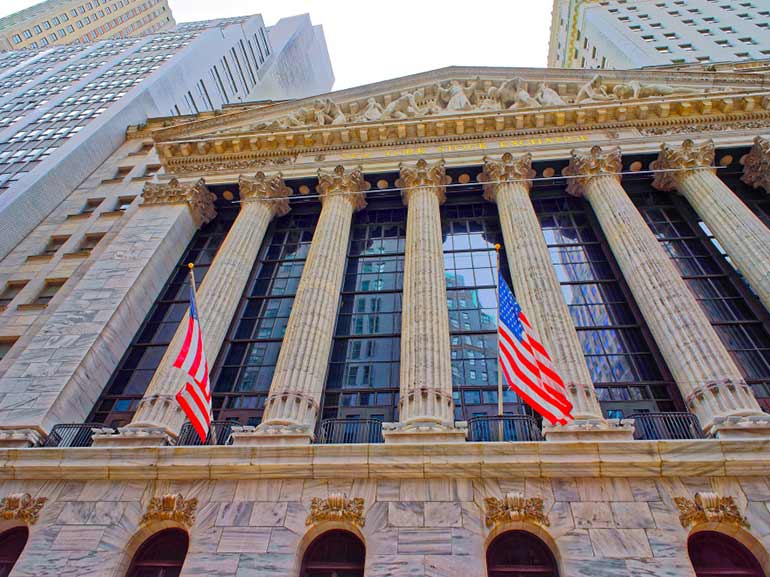S&P 500 Declines as AI-Led Tech Selloff Deepens
The S&P 500 has dropped 4.1% this year and, as of the time of the writing, giving back gains after hitting a record high in mid-February. Investors are reassessing risks as tech stocks retreat, trade tensions escalate, and the Federal Reserve (FED) prepares for a pivotal meeting this week.
Big Tech, once the market’s driving force, is now weighing on the index. Apple, Amazon, and Tesla are all under pressure, with slowing artificial intelligence (AI) rollouts and rising competition from China’s DeepSeek adding to investor concerns. Microsoft and Google (Alphabet) have also pulled back, with valuations under scrutiny.
Meanwhile, President Donald Trump’s tariff policies are adding another layer of uncertainty. Goldman Sachs has lowered its S&P 500 year-end target to 6,200 from 6,500, while consulting firm Yardeni Research cut on 15 March its forecast to 6,400 from 7,000, citing trade disruptions and economic risks.
With key economic events ahead, the next few weeks could determine whether markets find stability or face deeper losses.

Tech Selloff Deepens as AI Struggles Continue
Tech stocks, already under pressure, have suffered steep losses. Tesla is down 38.1% this year as of the time of writing, affected by a weakening EV demand and intensified Chinese competition. Its push into autonomous technology has yet to deliver meaningful revenue, adding to investor concerns.
Apple and Amazon have fallen 14.7% and 9.8%, respectively, AI product delays and softening consumer spending weigh on growth prospects. Microsoft is down 7.8%, with questions mounting over whether its AI investments can translate into sustained growth.
Meta Platforms stands apart, rising 3.7% as its cost-cutting strategy and AI-powered advertising reinforce investor confidence. Some expect the company to gain further ground following the Supreme Court’s decision to uphold a law requiring ByteDance to divest TikTok’s U.S. operations, potentially reshaping the competitive landscape. (Source: PBS News)
Fed’s Rate Decision Could Set Market Direction
The Federal Open Market Committee (FOMC) meets this week, with a policy decision set for Wednesday, 19 March, at 2:00 PM ET. Investors are looking for signals on whether rate cuts are coming or whether the policy will stay restrictive longer than expected. The majority of the expectations point toward keeping rates unchanged.
Fed Governor Christopher Waller has cautioned that easing isn’t imminent, citing inflation concerns. The latest data showed U.S. inflation at 2.8% in February, slightly below forecasts but above the Fed’s 2% target.
Since September 2024, the US central bank has already cut rates three times, bringing the federal funds rate to 4.50%. However, the European Central Bank (ECB) has taken a more aggressive stance, implementing six rate cuts since June as growth slows in Europe.
Tariff Day on 2 April Adds Another Threat
While rate policy takes center stage, “Tariff Day” on 2 April is another major risk factor. On that date, President Trump plans to impose 25% tariffs on imported cars, semiconductors, and pharmaceuticals, a move that could rattle global trade.
Tech firms, already grappling with AI setbacks and falling valuations, now face the added burden of higher supply chain costs. Automakers and pharmaceutical companies could also see pressure as key trading partners consider retaliation.
With market volatility already high, the risk of escalating trade tensions adds another layer of unpredictability. Investors are weighing whether tariffs will fuel inflation just as the Fed works to stabilise prices.
Conclusion
Markets remain on edge as Big Tech falters, trade tensions rise, and the Fed prepares for a critical decision. AI-driven selloffs, slowing consumer demand, and competitive pressures have rattled tech stocks, while Trump’s 2 April tariffs threaten to disrupt supply chains and corporate margins.
The Federal Reserve’s upcoming decision could influence sentiment, but inflation remains above target, and global trade conditions are deteriorating. The next few weeks will be pivotal as investors assess whether tech stocks can rebound, rate policy shifts take hold, and trade disruptions take hold.
With uncertainty mounting on multiple fronts, the coming weeks will determine whether the S&P 500 stabilizes or extends its decline. Markets will navigate a complex mix of monetary policy, trade policy shifts, and sector-specific challenges.
*Past performance does not reflect future results.







